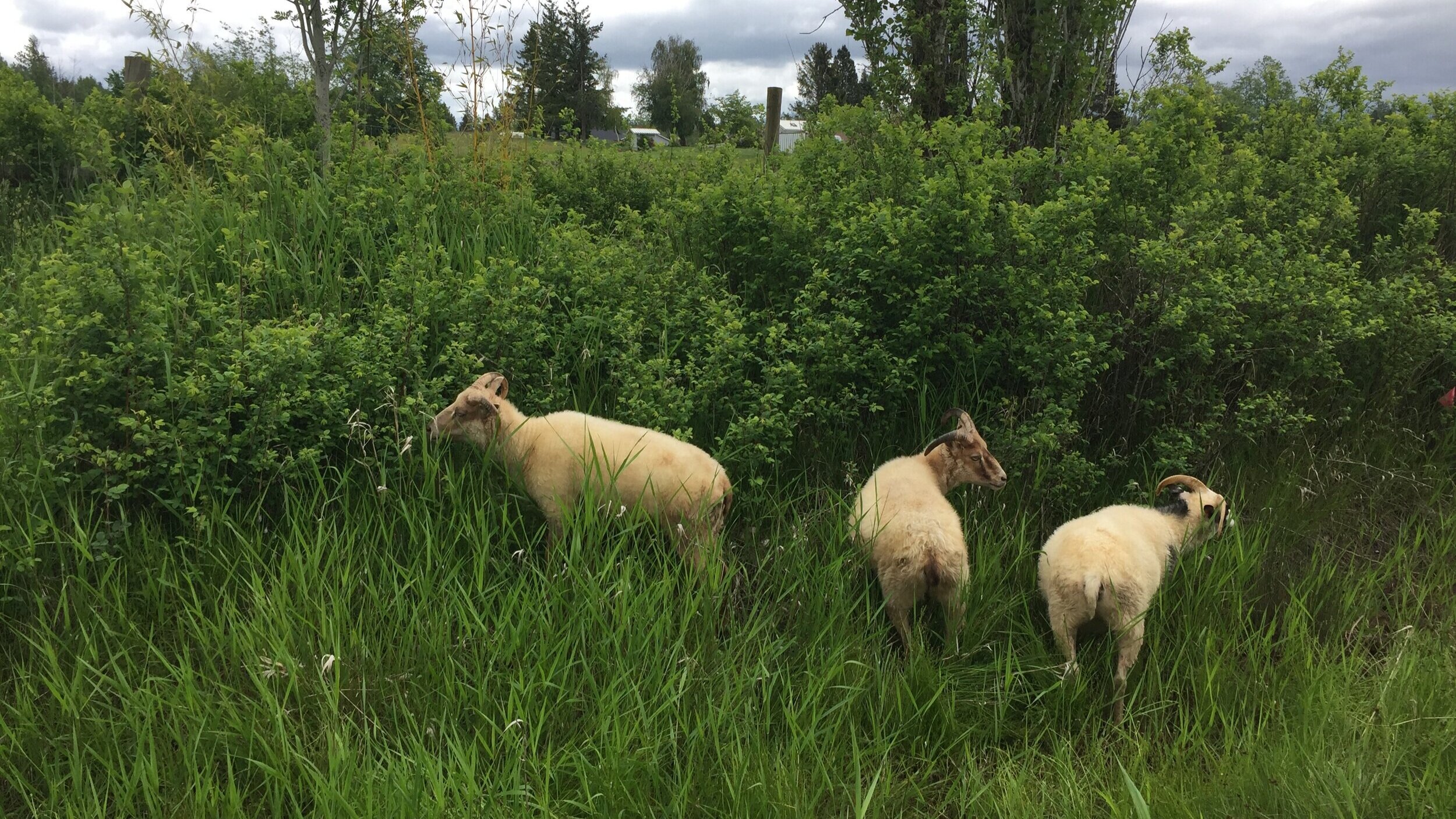Good grazing balances the needs of plants + sheep + soil
There’s a lot more to good grazing than turning livestock loose in an open field. In fact, this kind of conventional grazing can cause animals to overgraze the most nutritious, high-value pasture plants while leaving undesirable weeds to go to seed and multiply.
In contrast, Legacy Lamb practices regenerative grazing, which balances the needs of our pastures, sheep, and soils. Our sheep replace fossil-fuel driven mowers, reducing pollution while fertilizing the land, increasing carbon sequestration, and producing meat and wool.
REGENERATIVE GRAZING BENEFITS:
land use
Whatcom County agricultural lands are experiencing rapid residential development, highlighting the urgent need for greater protections. A recent study found that more than 2,000 acres of Whatcom County farmland is fallow (idle). Grazing underutilized lands like these slows down the conversion of farmland to higher-density housing.
Legacy Lamb whole-heartedly supports our county’s goal to reduce development density in agricultural areas, reduce conversion and fragmentation of farmland, and preserve agricultural neighborhoods “to maintain the necessary land base to support an economically viable agricultural industry.”
Soil & Ecosystem Health
Regenerative grazing builds soil health by managing livestock on pasture in a way that supports human and ecosystem health. As herds graze, dung, urine and old plant matter are trampled into the ground where they can decompose and enrich the soil’s network of microbial life. Dung beetles and other beneficial insects aerate and move resources into the soil, building topsoil.
community & food system resilience
Regenerative grazing rejuvenates agricultural landscapes and communities instead of degrading them. Putting idle or under-utilized lands into use via grazing enhances local food security by providing locally grown, sustainably produced meat.
Regenerative farmers have strong economic links to the rural sector. They contribute strongly to employment, and the incremental income generated by farming is spent on housing, education, and other products in the local non-farm economy.
CARBON SEQUESTRATION
Animal agriculture has been (rightfully) criticized for its contribution to global emissions. But widely accepted research has shown that livestock, when grazed appropriately, can actually produce food and fiber with a net carbon benefit. Well-managed grazing enhances our soil’s ability to capture carbon from the atmosphere by supporting critical microbial communities and relationships (aka “carbon farming.”) Increased soil carbon means more soil organic matter, which means more productive and resilient farms.

